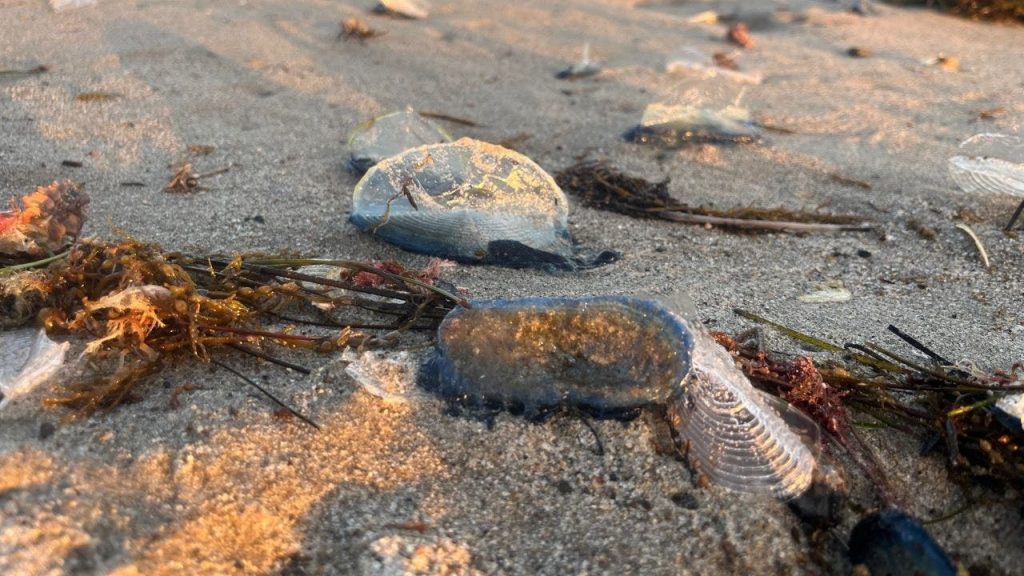Recently, there has been an increase in sightings of Velella velellas, also known as by-the-wind sailors, on beaches in Southern California from San Diego to Marin County. These blue gelatinous hydrozoans have been washing up on shores, with thousands seen on a single beach in San Clemente in April. Point Reyes National Seashore, a National Park Service preserve in the Bay Area, addressed this phenomenon in a Facebook post, explaining that these creatures use their translucent triangular sails to float in the ocean, being driven by prevailing winds. They are not able to actively navigate and can be blown onshore if the wind is too strong in the wrong direction, causing them to die.
After a few days on shore, the bodies of the Velella velellas will decompose, leaving only their cellophane-like sail and floats behind. Predators may also eat them, but some lucky ones are pulled back into the ocean before dying. These creatures often feed on plankton using their stinging tentacles, but their stingers are rarely harmful to humans, making them relatively safe for beachgoers to pick up. The recent increase in sightings is believed to be related to warmer currents in the waters off California, which can increase wind speeds and blow the Velella velellas onto shore.
Oceanographer Anya Stajner commented on the nature of these creatures, likening them to San Diegans as they spend a lot of time in the sun and go wherever the breeze takes them. Velella velellas live at the air and water interface, sitting at the surface of the water and moving along with the wind. Stajner explained that they end up on shores when they are pushed by a strong breeze that they cannot escape. Researchers consider these creatures to be ephemeral species, rare and exciting to come across. The fact that they rely on wind for movement can explain why they sometimes end up on shores and attract attention.
The by-the-wind sailors are a fascinating sight for beachgoers in Southern California, with their translucent sails and unique mode of movement. The recent increase in sightings is an interesting natural phenomenon that may be linked to warmer currents in the ocean. Despite their jellyfish-like appearance, Velella velellas are harmless to humans and play an important role in marine ecosystems by feeding on plankton. Researchers and beachgoers alike are intrigued by these creatures and their behavior, highlighting the beauty and wonder of the natural world.


